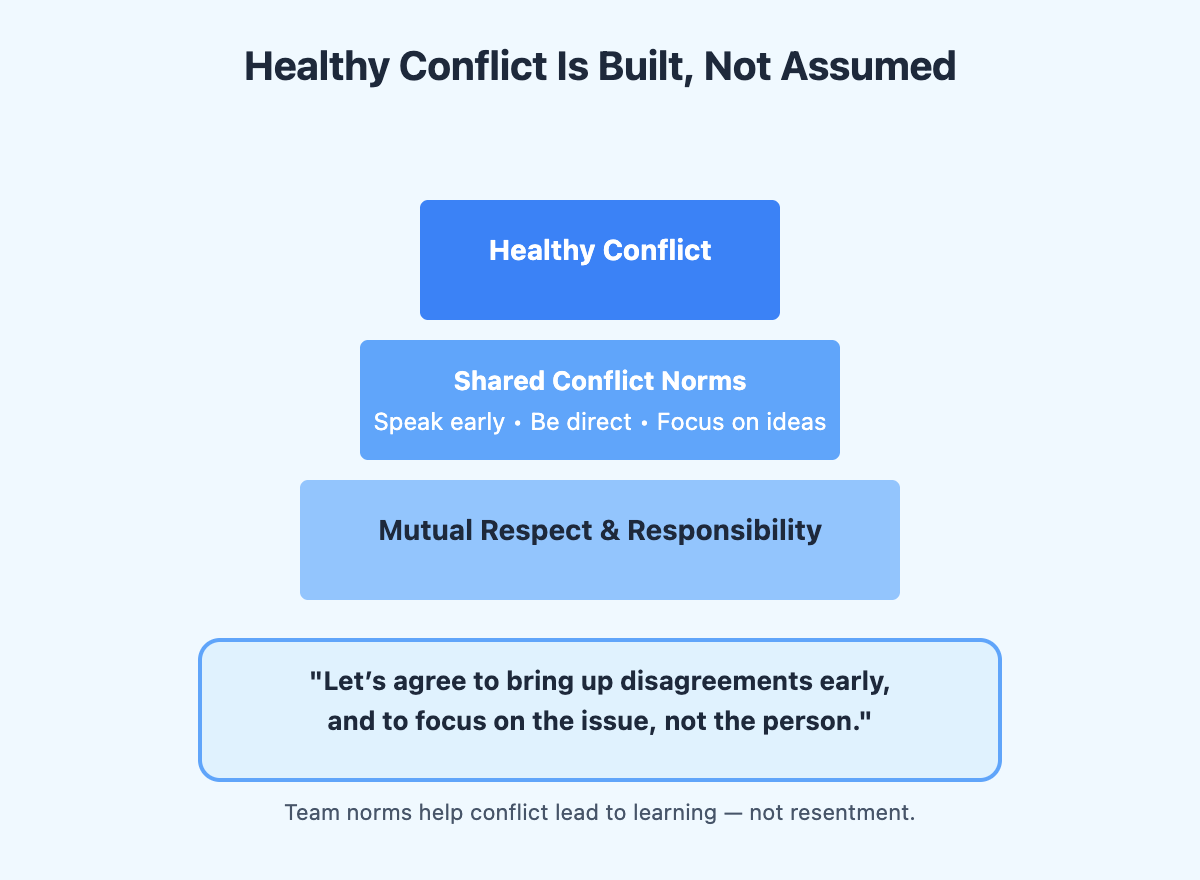In this unit, you’ll begin your journey toward building a team culture where disagreement is not only accepted but actively encouraged as a path to better decisions and stronger relationships. Expect to learn how to make it safe for everyone to speak up, how to model openness to being challenged, and how to set clear expectations for respectful, timely disagreement. These skills are essential for any team that wants to innovate, adapt, and thrive together.
The process of building healthy conflict norms can be visualized as a series of steps, each reinforcing the next. The image below illustrates how teams move from silence or avoidance, through open disagreement, toward constructive resolution and shared learning. As you read through this lesson, refer to the diagram to see how each skill and behavior contributes to a positive cycle of team growth.

The way you respond to disagreement shapes your team’s willingness to share honest feedback. When someone challenges your idea, responding with curiosity and appreciation—rather than defensiveness—signals that new perspectives are welcome. For example, instead of replying with "You just don't get it", try "I appreciate you raising that—can you share more about your concerns?" This approach not only diffuses tension but also invites deeper discussion.
Explicitly inviting dissent helps, too. You might say, "I might be missing something—what do you think?" or "Who sees this differently?" These phrases make it clear that disagreement is not just tolerated, but valued. Over time, your consistent modeling of this behavior will encourage others to do the same. The example dialogue below shows healthy disagreement in action:
- Natalie: I think we should launch the new feature next week to stay ahead of competitors.
- Jake: I see the urgency, but I’m concerned we haven’t tested it enough. What risks do you think we might face if we push the timeline?
- Natalie: That’s a fair point. I’m worried about losing momentum, but maybe we could do a quick round of user testing first?
- Jake: I appreciate you being open to that. If we can fit in a round of testing, I’d feel much more confident about the launch.
In this exchange, Jake demonstrates openness by expressing his concern directly but respectfully, and by inviting Natalie to share her reasoning. Natalie responds without defensiveness, acknowledges Jake’s perspective, and together they move toward a solution. Notice how phrases like "What risks do you think we might face?" and "I appreciate you being open to that" keep the conversation constructive and focused on shared goals.
Healthy conflict doesn’t happen by accident—it’s built on shared norms. Take time to clarify with your team what respectful disagreement looks like. For instance, you might agree that disagreements should be surfaced early, discussed directly, and focused on ideas rather than personalities. A team announcement could sound like: "Let’s agree to bring up disagreements as soon as they arise, and to focus on the issue, not the person. Our goal is to learn from each other, not to win arguments."
By making these expectations explicit, you create a foundation where everyone feels responsible for maintaining a healthy, open culture—one where conflict leads to progress, not resentment.
In the upcoming role-play session, you’ll get to practice responding in real time when a teammate pushes back on your idea, using the skills and language you’ve explored in this unit.
